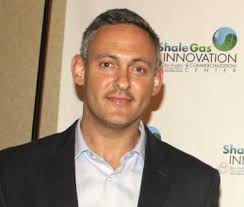From the Norman Transcript and CNHI’s Janelle Stecklein.
Brian Kalt believes he may have a solution for earthquake weary Oklahomans — even if oil and gas companies aren’t so convinced.
Kalt runs a plant in West Virginia that processes nearly 10,000 barrels of wastewater from oil and gas wells in his state, as well as neighboring Pennsylvania and Ohio.
Fairmont Brine Processing turns wastewater into usable products such as road salt and water for irrigation.
Kalt said he believes his next frontier is Oklahoma, where he envisions building a $150 million plant to process up to 60,000 barrels of wastewater per day. On Tuesday, he attended a forum organized Rep. Richard Morrissette, D-Oklahoma City, at the Capitol to drum up support for his plans.
Not everyone was convinced.
Kim Hatfield, Crawley Petroleum president, said in an interview after the forum the business model has several problems, including the fact that Oklahoma wells produce considerably more waste — about 1.3 million barrels per day — than those in the formations where Kalt now works.
Hatfield said Kalt would need to build 20 plants to keep up with what’s being produced in Oklahoma.
The wastewater in question is a byproduct of the hydraulic fracturing used to release underground reservoirs of gas and oil. The waste is usually sent back into the ground in disposal wells, which are widely blamed for earthquake activity in Oklahoma and elsewhere.
Kalt describes his method as “an environmentally responsible alternative” to that method that could help keep the ground from shaking so much.
His technology, he said, costs less than what producers now pay to pump wastewater back into the ground.
Kalt said he has $90 million lined up from a lender, but the remaining $60 million for his plant won’t be available until he lands five-year commitments from enough oil and gas companies ready to use his plant.
“It’s a tough sell right now,” he said, noting that depressed prices have created an uncertain environment for many in the energy industry.
“There are many who don’t know how much water their wells will be producing in two years,” he said in an interview, “so asking someone to commit to a two- to seven-year endeavor is difficult in the current landscape of the industry.”
Hatfield listed a number of concerns about how readily Kalt’s technology could work in Oklahoma.
Wastewater coming out of area wells includes a number of heavy minerals, Hatfield said, and the sludge that Kalt could not reuse would have to be disposed somewhere.
The federal government, meanwhile, bans the use of treated wastewater on agricultural lands in the western United States, he said.
Hatfield also criticized as “nonsense” Kalt’s estimate that Oklahoma producers pay $2 to $6 a barrel to dispose of wastewater. Some pay as little as 50 cents per barrel, he said.
Hatfield said it’s more economical for businesses — and better for the environment and public safety — to put the wastewater back into the ground.
Hatfield, who also oversees a venture-capital arm, said at least 100 companies have come forward proposing solutions to the state’s earthquake dilemma.
“They will all tell you they have the silver bullet, and we’re still looking,” he said. “Believe me, nobody is looking harder than we are — both me, as an operator, and as an investor.”






